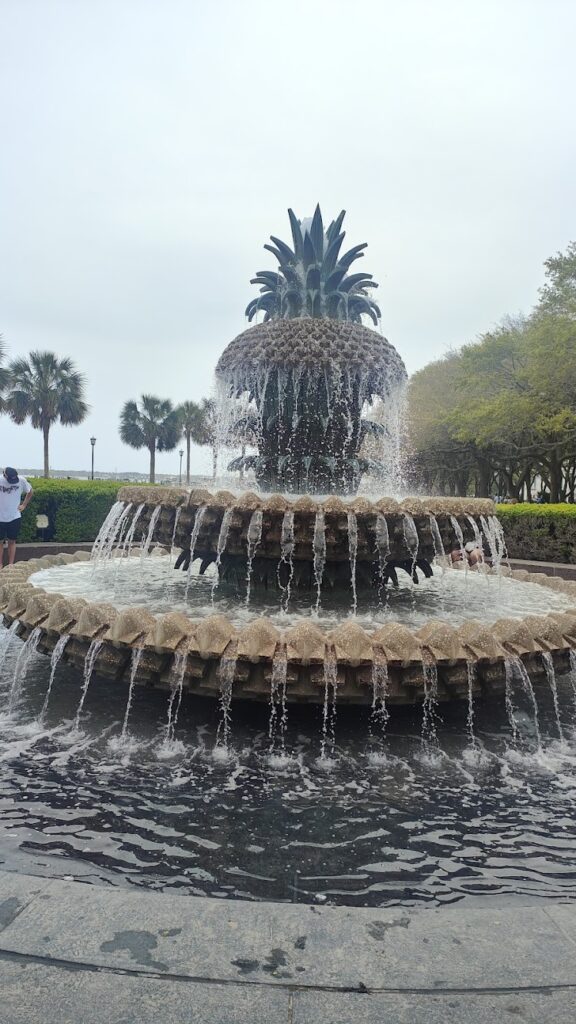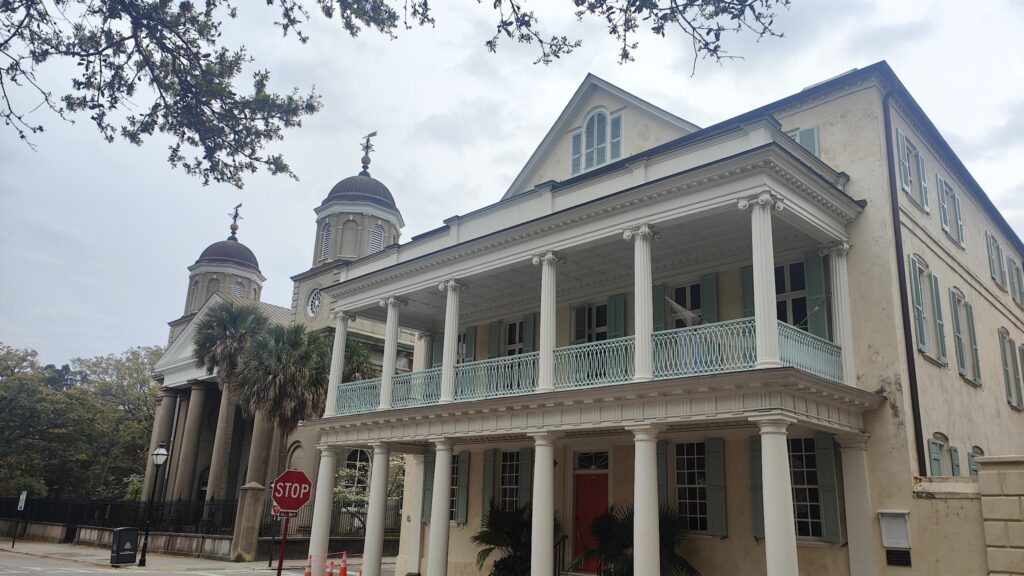
I set out from Beaufort expecting another day of cycling along the shoulder of busy highways. But, not so! Today began with six miles of traffic free cycle path, and became a succession of pretty back lanes and quiet roads through more flat, swampy, forested countryside. At times I had them all to myself. It was quite a contrast to the last couple of days of riding. These long, straight, largely empty roads kept me away from the much busier main route 17, which in any case seemed to be truck-free today on the short sections I couldn’t avoid. There seemed to be very little in the way of proper settlements or services during today’s eighty miles. I was on my own.
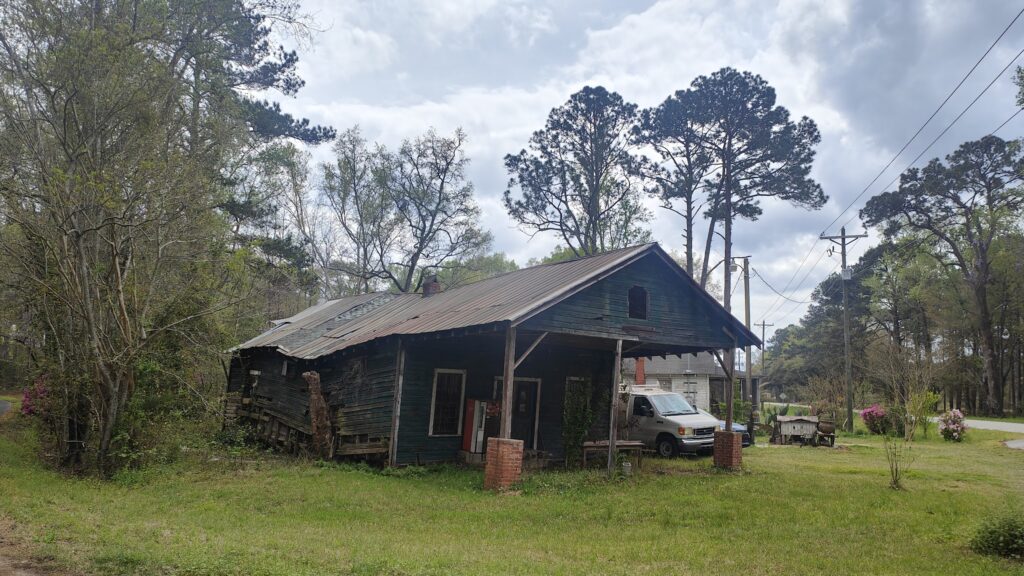
The network of smaller roads took me past a succession of rural dwellings, but they were sufficiently spread out that rarely did you get a proper sense of arriving anywhere. The homes were mostly rather run down and many were just large trailers or mobile homes that in some cases had been extended. They didn’t lack for land, or vehicles, but together gave the general impression that this was not an affluent area. Despite the lack of a store or gas station or any other sign of community, almost all of these long roads featured regular roadside churches and chapels, sometimes as often as a every mile. They were mostly quite simple affairs, but well cared for, neat and tidy, with a large sign outside to identify one from its neighbour.
But the big revelation today was the presence of vast quantities of purple flowering wisteria all along the roadside. It was stunning. I have never seen it on such a truly magnificent scale before. There were places where it spread right up to the canopy of the tall pine trees, engulfing the trunks in colour. I’m used to seeing it around a doorway at home, or along the walls of a house. But here in South Carolina, the stuff grows unchecked. It’s pretty amazing.
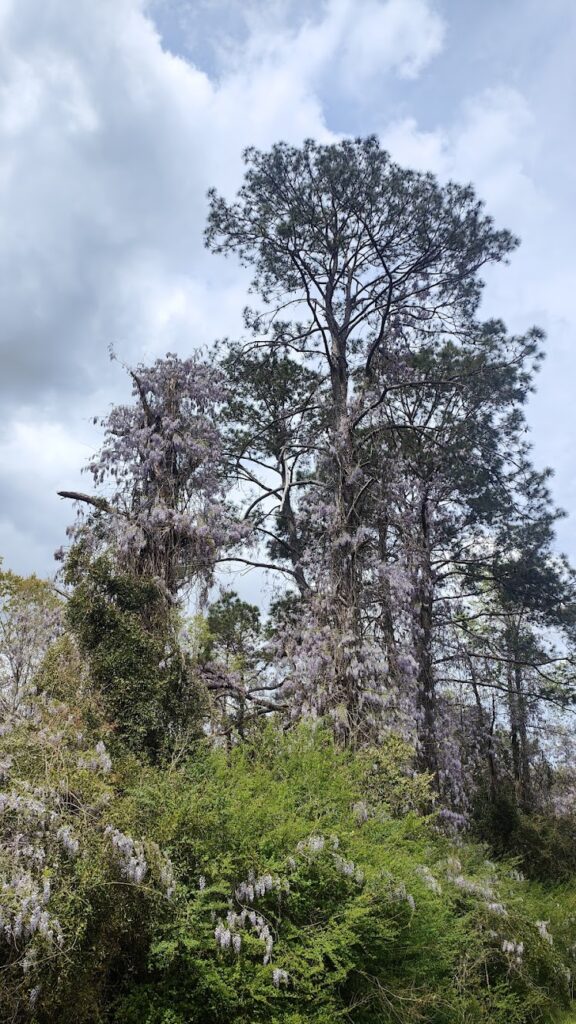
I found refreshment at a couple of gas station convenience stores when I reached major road junctions, but I was almost into the US equivalent of “never pass an open cafe”. So when the chance arose I indulged in the unhealthy wares of a Circle K, with its vast array of fridges and shelves of junk food. I needed it, I told myself, and I was probably right.Things picked up a little in the last twenty miles before Charleston, as I passed through the linear town of Hollywood. I wouldn’t be fooled by the name, though. It wasn’t glamorous. And then the day ended as it had begun, with the last few miles on a linear bike path that ran right up to where I was staying. It took me through more swampy, salty, tidal creeks where people were out fishing on the fringes of the Ashley River. And then suddenly I was surrounded by the usual strip development of fast food and motels that marks the beginning of any American town, and I had arrived.
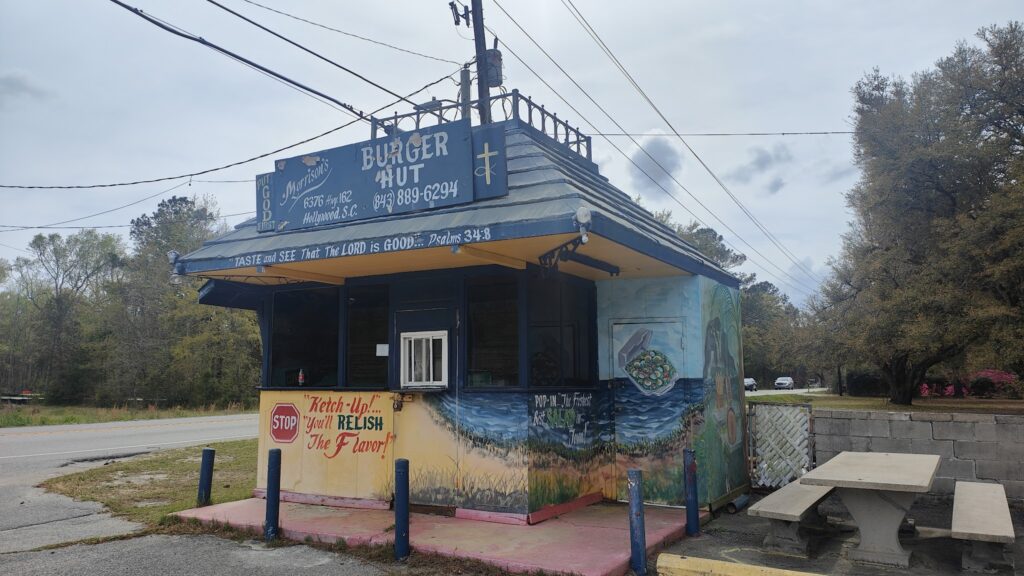
I knew that not seeing Charleston would be a huge missed opportunity so I had found a cheap motel in these unprepossessing outskirts (next to a McDonalds and across the street from a Taco Bell) and booked in for two nights. As with Savannah, I was very glad that I did. I took an Uber into the historic part of town on Sunday morning and spent the whole day there until after dinner. There was plenty to enjoy.
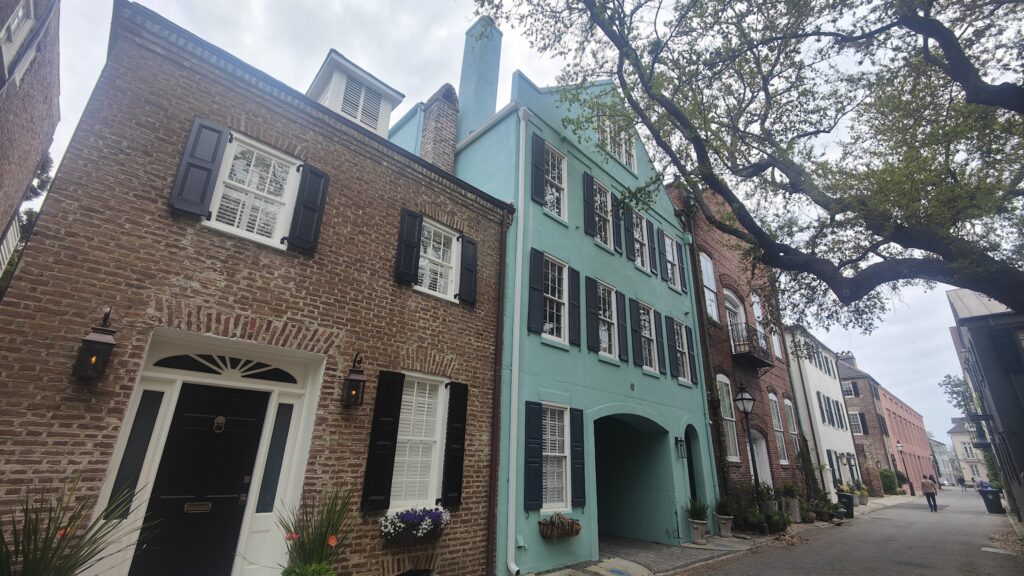
Charleston goes back to the seventeenth century when English settlers arrived in these shores for the first time. In 1690 the first town, Charles Town – named after the present King Charles II – was laid out on the peninsula it still occupies today. It soon became one of the most important strongholds in the American colonies. It has seen plenty of conflict over the years, being at the centre of both the Revolutionary and the American Civil wars. In the 1860s the Union lay siege to Charleston – as it was renamed post-independence – and reduced many of the older buildings to ruins. But today, there are many streets of beautiful Antebellum homes and churches, many dating back to the mid 1700s, and it has a graceful, almost timeless feel. The biggest street, Broad Street, runs right across the peninsula from one side to the other, and below this the city is exclusively residential.
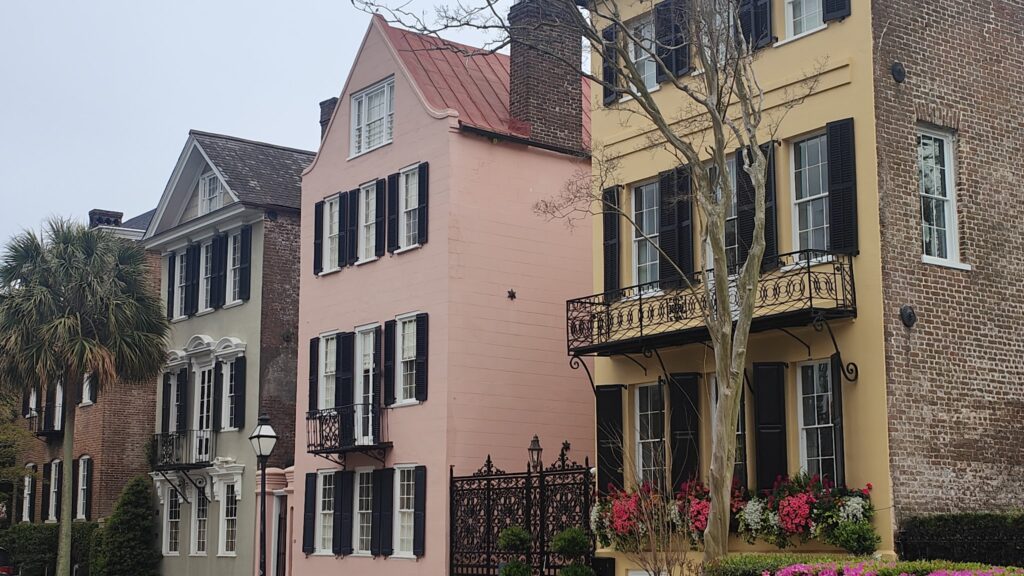
It is small enough to explore on foot, and many of the buildings have historical plaques explaining their origin and ownership over the years. The great and good all lived here, including several signatories of the Declaration of Independence. Many of the home are brick built, with sweeping porches and columns along one side, and wooden shutters beside every window. The gardens the properties enclose are delightful, too, containing plants that ranged from flowering cherry blossom to palm trees. There were lots of flowers, too. It was about as nice as city living gets. Horses pulled carriages of interested visitors slowly around these streets, adding to the scene. There was nothing out of place, except for the cars parked in the streets, and I could have taken hundreds of pictures. A lot of the homes were painted in different pastel shades, adding subtle colour to the rows of homes. One particular parade of houses is known as rainbow row, but there is nothing garish about any of it. Even the smaller alleyways that run between the larger streets are like stylish London mews. I loved it.
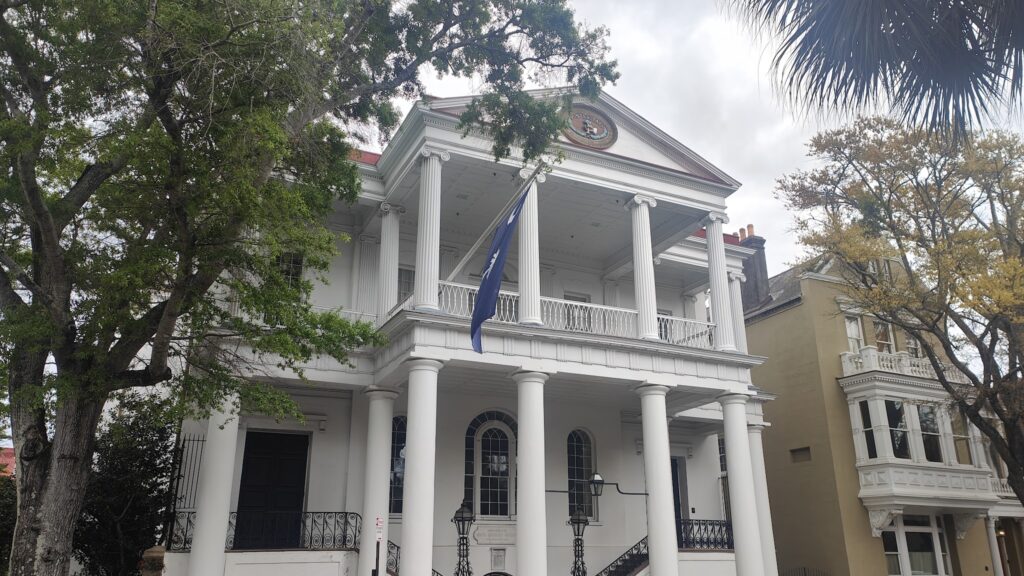
Above Broad Street was the commercial part of the old city. Here, too, are attractive buildings, wide stone pavements, trendy shops and a Covent Garden like City Market. Nothing apart from the many spires and towers of Charleston’s churches rises above its neighbour, making it all feel like it belongs together. Anything modern has been kept at a safe distance. You get as good a sense as you can in 2025 of how aa city like this would have been before the modern era. It has had its ups and downs: not only the ravages of war, but also a major earthquake in 1886, the most destructive in the history of the eastern USA. But Charleston appears to have fallen on good times today.
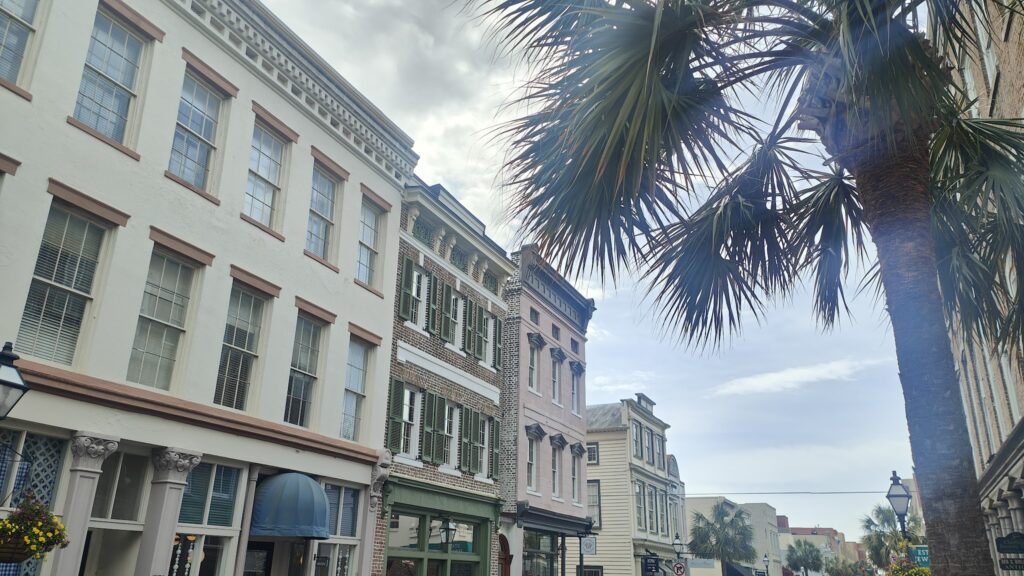
At the end of my time in Charleston, I walked from the waterfront all the way north up King Street, the principal shopping thoroughfare. This marked the start of the original King’s Highway, a road ordered by Charles II to link together Charleston and Boston, by way of Philadelphia and New York. It’s route will be something close to the route I now have ahead of me, starting tomorrow. It is 600 miles from fhere to Washington DC. I hope to reach it in a week or so, before my next rest day. First, there is much work to do!
